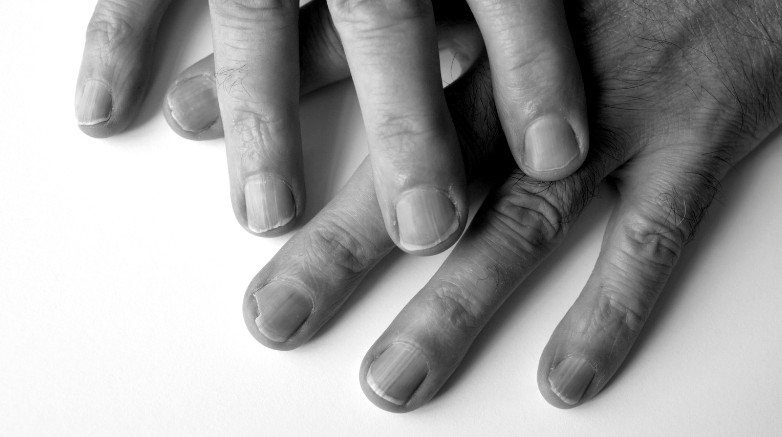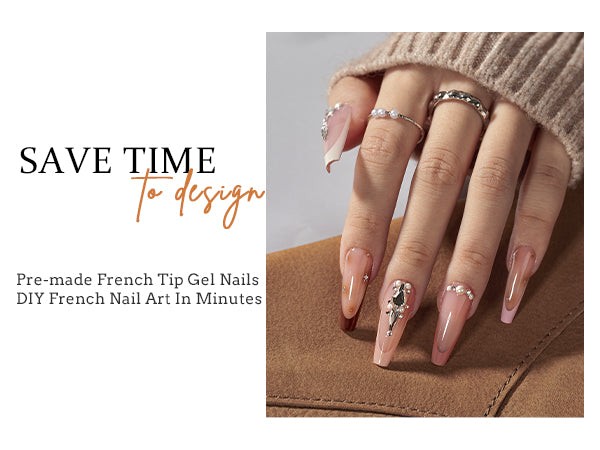Do your fingernails bend down, causing you concern? At WHY.EDU.VN, we understand your worry and offer insights into why your nails curve downward and how to address it. Downward-curving nails can indicate various underlying factors, from simple genetics to potential health concerns. Our goal is to provide you with a comprehensive understanding of nail bending, nail conditions, and nail health, along with practical solutions for promoting healthy nail growth and nail care.
1. Understanding Nail Anatomy and Growth
Before diving into why fingernails bend down, it’s crucial to understand the anatomy and growth process of nails. Nails are composed of keratin, a protein also found in hair and skin. The nail structure comprises several key parts:
- Nail Plate: The visible part of the nail.
- Nail Bed: The skin beneath the nail plate.
- Nail Matrix: Located under the cuticle, where nail growth begins.
- Lunula: The crescent-shaped white area at the base of the nail.
- Cuticle: The protective layer of skin at the base of the nail.
Nail growth starts in the matrix, where new cells are produced and push older cells forward, causing the nail to lengthen. On average, fingernails grow about 0.1 millimeters per day, taking approximately 3 to 6 months to fully regrow. Several factors, including age, diet, and overall health, can influence this growth rate.
2. Common Types of Nail Curvature and Deformities
Understanding the different types of nail curvature can help identify potential underlying issues. Here are some common nail deformities:
| Type of Nail Deformity | Description | Potential Causes |
|---|---|---|
| Koilonychia (Spoon Nails) | Nails curve upward, forming a concave shape like a spoon. | Iron deficiency anemia, hemochromatosis, hypothyroidism, Raynaud’s disease, lupus |
| Clubbing | Fingertips become enlarged, and nails curve downward, often associated with a loss of the normal nail bed angle. | Chronic lung disease, heart problems, inflammatory bowel disease, liver cirrhosis, AIDS |
| Onycholysis | Nail separates from the nail bed, creating a white or yellowish discoloration. | Trauma, fungal infection, psoriasis, thyroid disorders, allergic reactions |
| Beau’s Lines | Horizontal grooves or ridges across the nail plate. | Severe illness, chemotherapy, malnutrition, stress, zinc deficiency |
| Pitting | Small depressions or pits on the nail surface. | Psoriasis, eczema, alopecia areata |
| Onychogryphosis (Ram’s Horn Nails) | Thickened, curved nails resembling a ram’s horn, usually affecting the big toe. | Trauma, poor hygiene, peripheral vascular disease, neglect |
| Leukonychia | White spots or lines on the nail plate. | Trauma, mineral deficiency (zinc, calcium), allergic reaction, fungal infection |
| Splinter Hemorrhages | Tiny blood clots appearing as thin, red-brown lines under the nail. | Trauma, endocarditis, vasculitis, psoriasis, fungal infection |
| Terry’s Nails | Most of the nail bed appears white, with a narrow band of pink or brown at the tip. | Liver disease, congestive heart failure, diabetes, aging |
| Yellow Nail Syndrome | Nails thicken and turn yellow, often accompanied by lymphedema and respiratory problems. | Chronic respiratory infections (bronchiectasis), lymphedema, internal malignancies, autoimmune diseases, medication side effects |



Understanding these different types of nail deformities and their potential causes is essential for proper diagnosis and treatment. If you notice significant changes in your nails, consulting a healthcare professional is always recommended.
3. Why Do My Fingernails Bend Down? Common Causes
Several factors can cause fingernails to bend down. Identifying the specific cause is essential for addressing the issue effectively.
3.1. Genetics and Natural Nail Shape
Genetics play a significant role in determining nail shape and curvature. Some individuals naturally have nails that curve downward as they grow longer. This is simply a variation in nail structure and not necessarily a sign of an underlying health problem. If downward-curving nails run in your family, it’s likely a hereditary trait.
3.2. Aging and Nail Structure Changes
As we age, the structure of our nails can change. Nails may become thinner, more brittle, and more prone to bending. The nail bed can also lose some of its adhesion to the nail plate, leading to changes in curvature. These age-related changes are a natural part of the aging process and not always indicative of a health issue.
3.3. Trauma and Injury
Injuries to the nail bed or matrix can affect nail growth and shape. Even minor, repeated traumas, such as constantly bumping your nails, can cause them to bend downward over time. A single, significant injury can also disrupt nail growth and lead to permanent changes in nail curvature.
3.4. Nutritional Deficiencies
Nutritional deficiencies can significantly impact nail health and shape. Key nutrients essential for healthy nails include:
- Iron: Iron deficiency can cause koilonychia (spoon nails) or brittle nails.
- Biotin: Biotin deficiency can lead to brittle, thin nails that are prone to bending.
- Zinc: Zinc deficiency can result in white spots on nails and impaired nail growth.
- Protein: Adequate protein intake is essential for keratin production, the main component of nails.
- Vitamins: Vitamins A, C, D, and E are important for overall nail health and strength.
Maintaining a balanced diet rich in these nutrients is crucial for preventing nail problems caused by deficiencies.
3.5. Fungal Infections (Onychomycosis)
Fungal infections, also known as onychomycosis, are a common cause of nail deformities. These infections can cause nails to thicken, discolor, and become brittle. In some cases, fungal infections can also cause nails to bend downward as they grow.
3.6. Underlying Health Conditions
Certain underlying health conditions can manifest as changes in nail shape and curvature. These include:
- Respiratory Diseases: Chronic lung diseases, such as chronic obstructive pulmonary disease (COPD) and bronchiectasis, can cause nail clubbing.
- Cardiovascular Diseases: Heart conditions, such as congenital heart disease and endocarditis, can also lead to nail clubbing.
- Thyroid Disorders: Hypothyroidism and hyperthyroidism can affect nail growth and structure, leading to various nail deformities.
- Psoriasis: This skin condition can affect the nails, causing pitting, thickening, and separation from the nail bed.
- Anemia: Iron deficiency anemia can cause koilonychia (spoon nails) or brittle nails.
If you suspect an underlying health condition is causing your nails to bend down, consulting a healthcare provider for diagnosis and treatment is essential.
4. Distinguishing Between Curved Nails and Clubbed Nails
It’s important to differentiate between simple curved nails and clubbed nails, as they can indicate different underlying conditions.
| Feature | Curved Nails | Clubbed Nails |
|---|---|---|
| Definition | Nails grow downward as they lengthen, often due to genetics, aging, or minor trauma. | Fingertips become enlarged, and nails curve downward more dramatically, often associated with a loss of the normal nail bed angle. |
| Causes | Natural genetic traits, environmental factors, aging, minor trauma. | Chronic lung disease, heart problems, inflammatory bowel disease, liver cirrhosis, AIDS. |
| Characteristics | May appear smooth and are generally not a cause for concern. | The fingertips may become spongy when pressed, and nails may feel softer than usual. |
| Nail Bed Angle | Normal nail bed angle (around 160 degrees). | Loss of the normal nail bed angle (greater than 180 degrees). |
| Schamroth’s Window | Present (diamond-shaped space formed when opposing nails are placed together). | Absent (no diamond-shaped space formed when opposing nails are placed together). |
| Associated Symptoms | Usually none. | Shortness of breath, chronic cough, chest pain, fatigue, swelling of the extremities, jaundice, abdominal pain, unexplained weight loss. |
| Medical Significance | Generally not concerning, often a normal variation. | May indicate serious underlying health issues, such as lung disease, heart disease, or liver disease. Requires prompt medical evaluation. |
| Management | Good nail care practices, moisturizing, avoiding trauma. | Treatment of the underlying medical condition, oxygen therapy (if respiratory-related), smoking cessation, supportive care. |
| Prognosis | Good, with no significant health implications. | Varies depending on the underlying medical condition. Early diagnosis and treatment of the underlying cause can improve outcomes. |
If you suspect nail clubbing, seeking medical attention is crucial for diagnosing and managing any underlying health conditions.
5. Solutions to Prevent Nails from Bending Downward
While some causes of downward-curving nails are beyond your control, several strategies can help prevent or minimize the issue.
5.1. Proper Nail Care Techniques
- Keep Nails Trimmed: Regularly trim your nails to prevent them from growing too long and becoming more prone to bending.
- File Nails Correctly: File your nails in one direction to avoid weakening them. Use a fine-grit file to shape your nails gently.
- Avoid Harsh Chemicals: Limit exposure to harsh chemicals, such as those found in nail polish removers and household cleaners.
- Moisturize Regularly: Keep your nails and cuticles moisturized to prevent dryness and brittleness.
- Protect Your Nails: Wear gloves when doing tasks that may cause trauma to your nails, such as gardening or washing dishes.
5.2. Nutritional Strategies for Nail Health
- Balanced Diet: Consume a balanced diet rich in vitamins, minerals, and protein.
- Iron-Rich Foods: Include iron-rich foods in your diet, such as leafy greens, red meat, and beans.
- Biotin Supplementation: Consider taking a biotin supplement to strengthen nails.
- Zinc-Rich Foods: Eat zinc-rich foods, such as nuts, seeds, and seafood.
- Hydration: Stay hydrated by drinking plenty of water to keep your nails healthy and moisturized.
5.3. Topical Treatments and Nail Strengtheners
- Nail Strengtheners: Use nail strengtheners or hardeners to improve nail strength and prevent bending.
- Cuticle Oils: Apply cuticle oil regularly to keep your cuticles moisturized and healthy.
- Antifungal Treatments: If you suspect a fungal infection, use an over-the-counter antifungal treatment or consult a healthcare provider for prescription options.
5.4. Professional Nail Care
- Manicures: Get regular manicures to maintain nail health and shape. Choose a reputable nail salon that follows proper hygiene practices.
- Avoid Acrylics and Gels: Limit the use of acrylics and gels, as they can weaken nails and make them more prone to bending.
6. Applying Press-On Nails on Curved Nails
If you have curved nails and want to use press-on nails, here are some tips for a smooth application:
- Prepare Your Nails: Clean and dry your nails thoroughly.
- Trim and Shape: Trim and file your natural nails to a manageable length and shape.
- Choose the Right Size: Select press-on nails that match the size of your nail beds.
- Use a Strong Adhesive: Apply a small drop of strong nail glue to both the press-on and your natural nail.
- Press Firmly: Align the press-on nail above your cuticle and press down firmly for a few seconds.
- Finish with a Top Coat: Apply a clear top coat for extra shine and durability.
- Avoid Excessive Pressure: Avoid putting too much stress on the nails to prevent lifting or breaking.
7. When to Seek Help from a Healthcare Provider
While many cases of downward-curving nails are not cause for concern, it’s essential to know when to seek medical attention. Consult a healthcare provider if you experience any of the following:
- Sudden or significant changes in nail shape or curvature
- Nail clubbing
- Nail discoloration
- Nail thickening
- Nail separation from the nail bed
- Pain, swelling, or redness around the nails
- Accompanying symptoms, such as shortness of breath, chest pain, or fatigue
A healthcare provider can evaluate your nails and determine if an underlying health condition is responsible for the changes. They can also recommend appropriate treatment options.
8. Seeking Expert Advice at WHY.EDU.VN
Navigating the complexities of nail health can be challenging, especially when you notice changes like your fingernails bending down. At WHY.EDU.VN, we understand the importance of accurate and reliable information. If you’re struggling to find answers to your questions about nail curvature, or if you’re simply seeking expert advice, we’re here to help.
Our platform offers a unique opportunity to connect with professionals who can provide personalized guidance and address your specific concerns. Whether you’re curious about the potential causes of your nail changes, seeking recommendations for effective treatments, or simply looking for reassurance, WHY.EDU.VN is your go-to resource.
Here’s how WHY.EDU.VN can assist you:
- Access to Expert Insights: Our network includes knowledgeable professionals who specialize in various fields related to health and wellness. You can tap into their expertise to gain a deeper understanding of your nail-related issues.
- Personalized Guidance: Instead of sifting through generic information online, you can ask specific questions and receive tailored advice based on your unique situation.
- Reliable Information: We prioritize accuracy and credibility, ensuring that the information you receive is trustworthy and up-to-date.
- Convenient and Accessible: Our platform is designed to be user-friendly and accessible from anywhere, allowing you to seek expert advice at your convenience.
Don’t let your questions about nail health go unanswered. Visit WHY.EDU.VN today to connect with experts who can provide the guidance and support you need.
9. Conclusion: Taking Control of Your Nail Health
Downward-curving nails can be a cosmetic concern or a sign of an underlying health issue. By understanding the potential causes, practicing proper nail care, and seeking medical attention when necessary, you can take control of your nail health. Remember to maintain a balanced diet, protect your nails from trauma, and consult a healthcare provider if you have any concerns.
At WHY.EDU.VN, we are committed to providing you with accurate and reliable information to help you make informed decisions about your health. If you have any questions or concerns about your nails, don’t hesitate to reach out to us. We are here to support you on your journey to healthy, beautiful nails. You can reach us at 101 Curiosity Lane, Answer Town, CA 90210, United States, Whatsapp: +1 (213) 555-0101.
10. Frequently Asked Questions (FAQs)
10.1. Why do my fingernails curl down at the tip?
Fingernails can curl down at the tip due to genetics, aging, trauma, fungal infections, or underlying health conditions. It’s essential to identify the specific cause to address the issue effectively.
10.2. What causes fingernails to curl when they get long?
As fingernails grow longer, they may curl due to structural changes, such as thinning of the nail plate or loss of adhesion between the nail plate and nail bed.
10.3. How do I stop my nails from curling?
To prevent nails from curling, practice proper nail care, maintain a balanced diet, protect your nails from trauma, and seek medical attention if you suspect an underlying health condition.
10.4. How to correct curved nails?
Correcting curved nails may involve addressing the underlying cause, such as treating a fungal infection or correcting a nutritional deficiency. You can also use nail strengtheners and practice proper nail care to improve nail health.
10.5. How to make a nail grow straight?
Encourage straight nail growth by maintaining a healthy diet, avoiding harsh chemicals, using nail strengthening treatments, and regularly trimming and filing your nails.
10.6. What are spoon nails, and why do they occur?
Spoon nails (koilonychia) are nails that curve upward at the edges, resembling a spoon. This condition may occur due to iron deficiency anemia or other health problems.
10.7. Can nail supplements help with curved nails?
Nail supplements containing biotin, vitamins, and minerals can help improve nail strength and health, potentially reducing the likelihood of nails curving. However, it’s essential to consult a healthcare provider before starting any new supplements.
10.8. How often should I trim my nails to prevent bending?
Trim your nails regularly, about every 1-2 weeks, to prevent them from growing too long and becoming more prone to bending.
10.9. Are there any home remedies for strengthening nails?
Home remedies for strengthening nails include moisturizing with coconut oil or olive oil, soaking nails in lemon juice, and consuming a diet rich in protein and essential nutrients.
10.10. What kind of doctor should I see for nail problems?
For nail problems, you should see a dermatologist or a podiatrist (for toenail issues). These specialists can diagnose and treat various nail conditions.
We hope this comprehensive guide has answered your questions about why your fingernails bend down. Remember, healthy nails are a reflection of overall well-being. For more expert advice and solutions, visit why.edu.vn today!